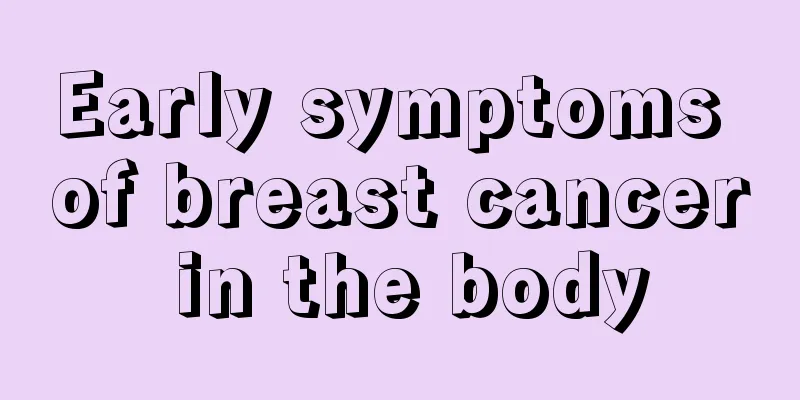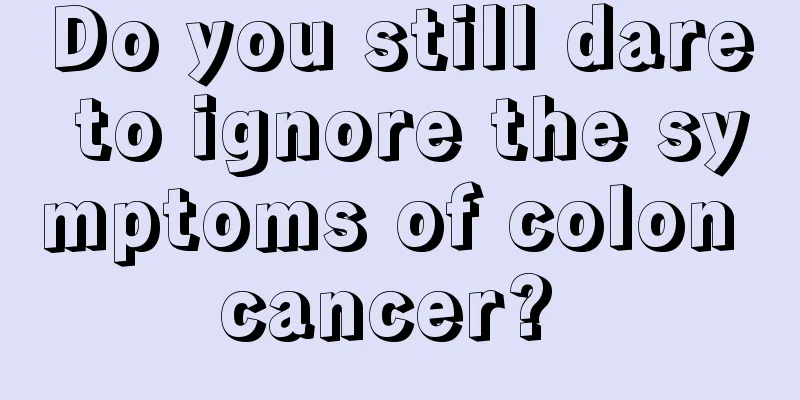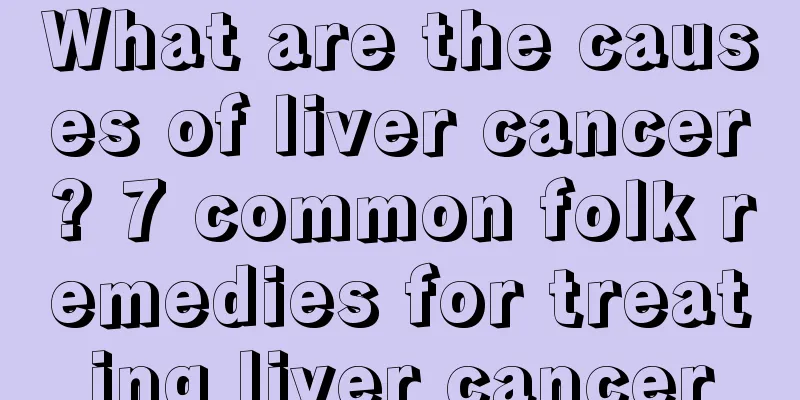Early symptoms of breast cancer in the body

|
Early symptoms of breast cancer include breast lumps, nipple discharge, breast skin changes, etc. Timely medical treatment and breast ultrasound, mammography or magnetic resonance imaging can help early diagnosis. Treatment methods include surgical resection, radiotherapy, chemotherapy and targeted therapy. The specific plan needs to be formulated according to the condition. 1. Breast lumps are the most common early symptoms of breast cancer. They are usually painless, hard, and have irregular edges. Patients can find them through self-examination. It is recommended to perform breast self-examination once a month and pay attention to changes in the size, shape, and position of the lumps. If any abnormalities are found, seek medical attention for further examination. 2. Nipple discharge is another early sign of breast cancer, especially bloody or serous discharge from one nipple. This may be related to lesions in the breast ducts and requires a definitive diagnosis through breast ductoscopy or cytology. In daily life, pay attention to whether there is abnormal secretion in your underwear and record the color and amount of the discharge. 3. Breast skin changes are also one of the early manifestations of breast cancer, such as skin dimpling, orange peel-like changes or redness and swelling. These changes may be related to tumor invasion of the skin or lymphatic vessels. Patients should regularly observe the condition of the breast skin. If abnormalities are found, breast ultrasound or mammography should be performed in time, and biopsy should be performed if necessary to confirm the diagnosis. 4. The treatment of breast cancer requires a personalized plan based on the condition. Surgical resection is the main treatment, including breast-conserving surgery and mastectomy. Radiotherapy is often used as an adjuvant therapy after surgery to reduce the risk of local recurrence. Chemotherapy is suitable for patients in the middle and late stages, and commonly used drugs include paclitaxel, doxorubicin and cyclophosphamide. Targeted therapy is for HER2-positive breast cancer, and the commonly used drug is trastuzumab. 5. Early detection and timely treatment are the key to improving the cure rate of breast cancer. It is recommended that women over 40 years old undergo breast screening once a year, and high-risk groups can appropriately advance their screening age. In daily life, maintaining a healthy lifestyle, such as a balanced diet, moderate exercise, and avoiding excessive stress, can help reduce the risk of breast cancer. If any breast abnormalities occur, seek medical attention immediately without delay. Early symptoms of breast cancer vary, and timely detection and appropriate treatment measures are crucial. Regular screening, self-examination and a healthy lifestyle can effectively reduce the risk of breast cancer and increase the cure rate. If any breast abnormalities occur, be sure to seek medical attention in a timely manner for professional diagnosis and treatment. |
<<: Can normal tumor markers rule out uterine cancer?
>>: What is gynecological teratoma and what are its symptoms
Recommend
It is very simple to prevent liver cancer, just follow the "four no-eating" principle
Liver cancer is the most common "health kill...
Tell you what is malignant melanoma
Malignant melanoma is a manifestation of the grad...
The "Top Ten Carcinogenic Foods" are not completely scientific. The key lies in how to eat them
Sunflower seeds grow fast, so they absorb more he...
What should I do if I sweat a lot during exercise in summer?
I believe that everyone has this misunderstanding,...
Beware of three squatting habits that lead to knee pain
Squats are a common method of fitness and weight ...
Anemia is one of the early symptoms of colorectal cancer
However, as the disease progresses, a series of e...
Tips for making soapnut liquid thick
If you want to make the soapberry liquid very thi...
How to fry hazelnuts
Hazelnut is a common nut and a snack that many pe...
Symptoms of thyroid cancer invading the throat
Thyroid cancer invading the throat may manifest a...
Symptoms of mid-to-late stage esophageal cancer and cachexia
Research has found that patients in the middle an...
What are the taboos of the effects of yam
Yam can be called a fruit or a vegetable because ...
Is it reliable to have a boy by taking Chinese medicine
The secret to having a baby People have always ho...
Are cold hands and feet in liver cancer a sign of death?
Cold hands and feet in patients with liver cancer...
Is skin a tissue or an organ?
The skin is generally considered an organ. It is ...
What's going on when I suddenly cough up blood?
Suddenly coughing up blood is usually caused by b...









